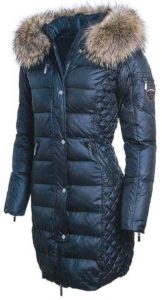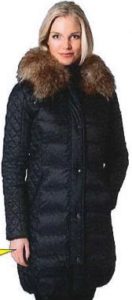In a previous post we explored the potential disadvantages of failing to utilise the registered community design (“RCD”) in a Danish context. By contrast, this post will examine the possibilities of enforcement when a product is not protected as a RCD but as an unregistered community design (“UCD”). Further, this post will demonstrate how the calculation of compensation and damages can be based on a non-infringing product.
The point of reference is a May 2017 case (V-10-16) from the Danish Maritime and Commercial High Court (“the Court”) concerning the alleged infringement of a jacket.
In 2014 the Swedish fashion company House of SAKI AB (“SAKI”) initiated the marketing of a jacket called “Beam”. However, in 2015 SAKI became aware of a jacket marketed by the Danish fashion company Denasia Europe ApS (“Denasia”), which according to SAKI constituted an imitation of the Beam-jacket.
The case before the Court involved three different versions of Denasia’s jacket:
- A prototype featured in Denasia’s marketing in relation to a fashion fair.
- A sample displayed at the fashion fair.
- The jacket actually delivered to Denasia’s customers (not pictured below).
The dispute was limited to the prototype- and the sample jacket as it was undisputed that the jacket actually delivered to Denasia’s customers did not constitute an infringement.
 |
 |
|
| SAKI’s Beam-jacket | Denasia’s prototype jacket | Denasia’s sample jacket |
The main question before the Court was to determine whether Denasia’s prototype- and sample jacket constituted an infringement of SAKI’s rights under the Community Design Regulation (“CDR”) and the Danish Marketing Practices Act (“MPA”).
The Beam-jacket was not protected as a RCD, which would have granted the jacket priority protection that applies irrespective of whether the infringer was familiar with the RCD. However, the Court found that the Beam-jacket was protected as an UCD as the design of the jacket fulfilled the general requirements of novelty and individuality.
A UCD is acquired by making the design available to the public within the EU and offers a short-term protection of 3 years, whereas the RCD is protected for a maximum of 25 years. Similar to the RCD, the UCD implies that the right-holder has an exclusive right to exploit the design for commercial purposes and protection is offered against subsequent designs which do not give the informed user a different overall impression.
In contrast to the RCD, the protection conferred by a UCD is limited to imitations made by an infringer in bad faith regarding the existence of the UCD. According to Danish case law the requirement of bad faith on the part of the infringer is de facto fulfilled when the subsequent design is highly similar to that of the UCD.
In the present case the Court examined the overall impression of Denasia’s prototype- and sample jacket compared to SAKI’s Beam-jacket. According to the Court, several design elements of the compared jackets appeared highly similar, including the length, the detachable fur collar, the quilting and the pockets. The Court found that the differences between the jackets were insignificant and that the overall impression, therefore, was highly similar. Thus, Denasia’s prototype- and sample jacket constituted an infringement of SAKI’s rights granted by the UCD.
In terms of compensation and damages the Court noted that only 4 of Denasia’s infringing sample jackets had been sold. In addition, 45 jackets had been ordered at the fashion fair and subsequent delivered to Denasia’s customers. As mentioned above, however, the jackets actually delivered to the customers did not constitute an infringement.
Interestingly, the Court found that the calculation of compensation and damages should also include the sales of the 45 jackets as the orders had been made on the basis of Denasia’s infringing prototype- and sample jacket. The initial marketing of a product can, therefore, constitute an infringement irrespective of subsequent changes made to the final product. This is of particular relevance for fashion companies, as the initial stage of a product – shown on a catwalk or at a fashion fair etc. – can constitute an infringement notwithstanding the appearance of the final product.
_____________________________
To make sure you do not miss out on regular updates from the Kluwer Trademark Blog, please subscribe here.



